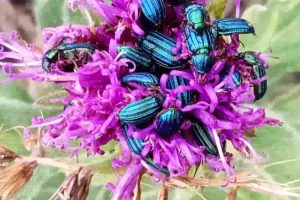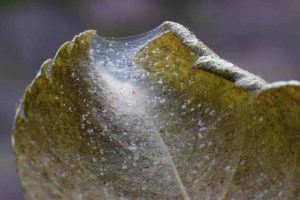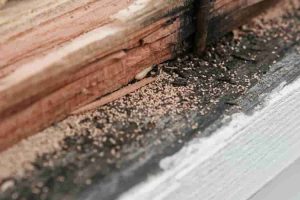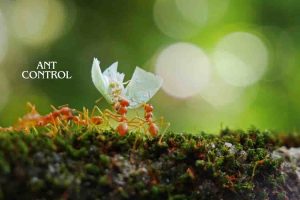Slaters, often found in our gardens and homes, can be a nuisance. These small pests thrive in moist environments, feeding on decaying organic matter. Understanding effective slaters pest control is essential to maintaining a healthy garden and a safe home environment.
To keep slaters at bay, we need to adopt both preventive and proactive measures. For example, turning compost frequently can discourage slaters, and creating barriers with seedling collars made from plastic bottles can protect young plants. Additionally, storing timber and other materials in full sun can reduce their habitats.
When it comes to treating these pests, direct application of insecticides is effective. A perimeter spray around the house can prevent their entry, ensuring our living spaces stay pest-free. With these techniques, we can manage slaters and protect our garden’s health and productivity.
Understanding Slaters
Slaters, also known as pill bugs or woodlice, are small crustaceans commonly found in gardens. We will explore their biology, habitat, and their role in the ecosystem.
Biology and Identification
Slaters belong to the class Crustacea. Like lobsters and crabs, they have a hard exoskeleton. They are segmented and usually measure about 1 cm in length.
A key feature is their seven pairs of legs, which help them move efficiently through soil and leaf litter. They also have two antennae on their heads.
These creatures are grey or brown and can roll into a ball when disturbed, a trait especially common in pill bugs. Their ability to roll up is a defense mechanism to protect themselves from predators.
Habitat and Behavior
Slaters thrive in moist environments, often hiding under logs, rocks, or plant debris. They prefer damp, dark conditions and are commonly found in compost heaps and garden beds.
To survive, they rely on organic matter, which they feed on. They break down this matter into simple nutrients, enriching the soil. This makes them essential for decomposing dead plant material.
During the daytime, slaters remain hidden to avoid drying out. At night, they are more active as the cooler temperatures and higher humidity levels are favorable. If we turn our compost regularly and avoid overwatering, we can discourage their population from flourishing.
Slaters in the Ecosystem
Slaters play a crucial role in the ecosystem by decomposing organic matter. By feeding on decaying plant material, they help recycle nutrients back into the soil.
While beneficial, they can become pests if their population grows too large. They may start feeding on seedlings and other plants, causing damage.
Introducing natural predators, such as beetles and spiders, can help manage their numbers. Additionally, using traps like hollowed-out orange halves filled with potato peelings can reduce their presence.
Their activity in breaking down organic matter helps maintain healthy soil, which is vital for plant growth. Understanding their role can help us manage them effectively in our gardens.
Preventing and Controlling Infestations
To effectively manage and prevent slater infestations, it is essential to assess the environment, employ natural preventive strategies, and intervene when necessary. Our comprehensive approach covers various aspects to ensure your home and garden remain free of these pests.
Home and Garden Assessment
First, we need to thoroughly inspect our homes and gardens. Slaters thrive in moist environments and prefer areas with damp conditions. It’s vital to check for and address any sources of excess moisture.
Key areas to inspect:
- Compost Heaps: Turn compost frequently to discourage slaters.
- Mulch: Use non-plant based mulch to create a less inviting habitat.
- Storage Areas: Timber, bricks, and rocks should be stored in full sun.
- Entry Points: Ensure that all potential entry points, such as cracks and crevices, are sealed properly.
By focusing on these key areas, we can reduce the attractiveness of our properties to slaters and other pests.
Natural Prevention Strategies
There are several natural prevention tips we can utilize to control slater populations. These methods are environmentally friendly and safe for our gardens.
- Seedling Collars: Create seedling collars from plastic drink bottles to protect young plants.
- Traps: Use orange halves or cardboard tubes filled with organic matter like potato peelings to trap and remove slaters.
- Proper Ventilation: Ensure good ventilation in garden areas to keep soil dry.
Preventive measures that minimize moisture and provide physical barriers can significantly reduce the likelihood of an infestation. These methods are straightforward and can be easily implemented in our garden maintenance routines.
Intervention Measures
Despite our best efforts, intervention may sometimes be required. Effective intervention measures are crucial for immediate control of slaters.
- Insecticides: Directly spray slaters with insecticides using an aerosol or ready-to-use pump pack.
- Perimeter Spray: Conduct a perimeter spray around the home to create a protective barrier. Focus on good coverage at ground level and around potential entry points.
- Regular Inspections: Schedule regular inspections to catch any early signs of an infestation.
We should use these measures responsibly and only when necessary to maintain a balanced and healthy environment in our homes and gardens. Taking a proactive approach ensures that we stay ahead in the management of slater populations.
Common Slaters Problems and Solutions
Slaters can cause problems in our gardens, ranging from damaging young plants to being a nuisance in our homes. They can also help decompose organic matter, making them both pests and allies depending on the situation.
Slaters and Plant Damage
Slaters, also known as pill bugs or woodlice, often damage young plants by feeding on seedlings and tender shoots. We frequently see damage in vegetables like strawberries and leafy greens. They chew small holes in leaves and stems, which can stunt plant growth.
Another issue is their attraction to decaying plant matter. Slaters thrive in damp environments with plenty of organic material. If we leave grass clippings, mulch, or compost piles too long, it provides an ideal habitat for them. They can quickly become a problem if their population grows unchecked.
To manage slater damage, we can use seedling collars made from plastic bottles to protect young plants. Turning compost frequently helps to discourage slaters. Keeping timber, bricks, and other materials in full sun can also make the environment less inviting for these pests. Using completely decomposed compost in garden beds and drip irrigation to reduce soil moisture can further minimize slater problems.
Slaters as Pests and Allies
While slaters can be pests, they play an important role in decomposing organic matter and recycling nutrients. In garden beds, they break down leaf litter and other plant debris, contributing to soil health. This makes them beneficial insects in controlled numbers.
However, if their numbers get too high, they become pests, particularly if they enter our homes. Regular inspections and treatments can help maintain a balance. We might use perimeter sprays of insecticides around our homes to prevent them from entering. Hollowed-out orange halves or cardboard tubes filled with organic material like potato peelings can trap and help control their population.
Understanding the dual role of slaters can help us better manage them. By creating an environment that supports the beneficial aspects while controlling harmful behaviors, we can maintain healthier gardens and homes.
On-Time Service

5 STAR SERVICE BASED ON 100+ GOOGLE REVIEWS
PET & FAMILY FRIENDLY TREATMENT

ALL YEAR-ROUND PROTECTION
Take Back Control Now
8
REASON TO CHOOSE SAFE PEST CONTROL
- Guarantee protection all year-round
- 30 Years Collective Experience
- An impeccable reputation across Sydney's Suburbs
- Certified treatments & written Warranty On all work carried out
- Family Owned & Operated
- Rated #1 Pest Control In Sydney NSW
- No Mess, No Smell
- Family & Pet Friendly Treatments
REQUEST A QUOTE







